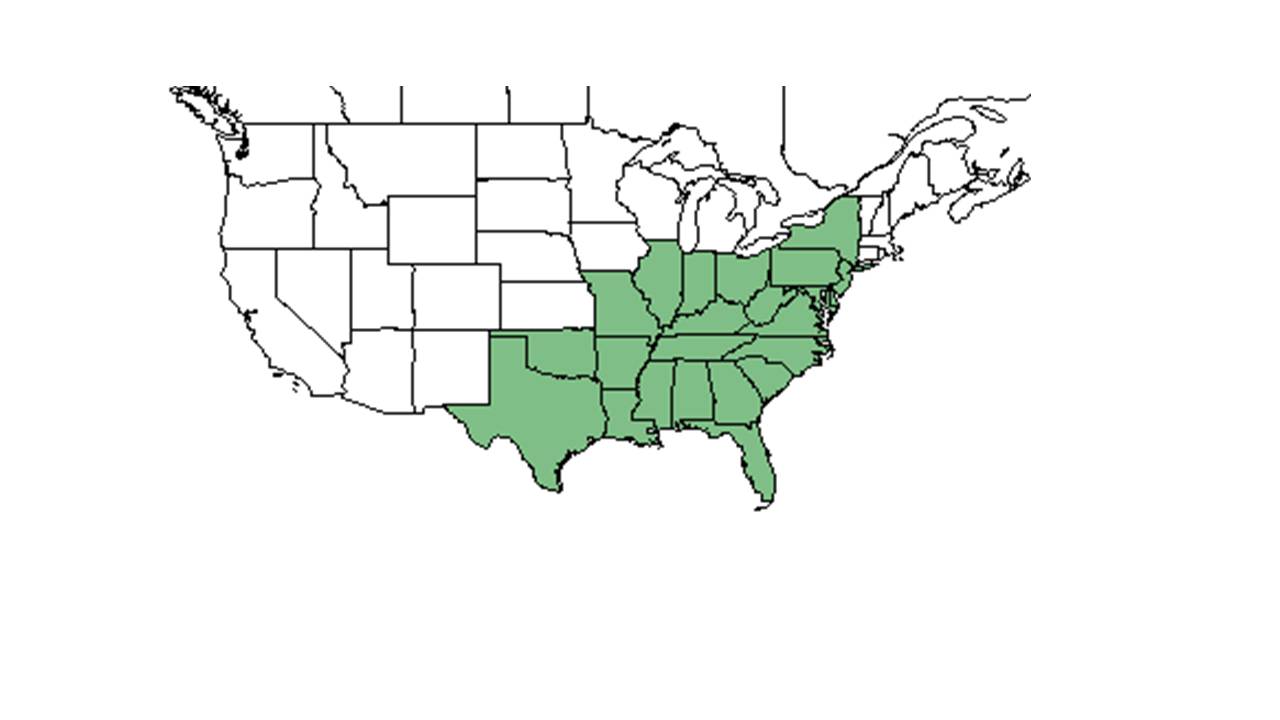Difference between revisions of "Desmodium laevigatum"
(→References and notes) |
(→Ecology) |
||
| Line 24: | Line 24: | ||
==Ecology== | ==Ecology== | ||
===Habitat=== <!--Natural communities, human disturbed habitats, topography, hydrology, soils, light, fire regime requirements for removal of competition, etc.--> | ===Habitat=== <!--Natural communities, human disturbed habitats, topography, hydrology, soils, light, fire regime requirements for removal of competition, etc.--> | ||
| − | + | It is found in areas that frequently burn such as open woods bordering a bay, hardwood hammocks, upland pine, in open mixed pine-hardwood forest, well drained upland, savannas, turkey oak sand ridges (FSU Herbarium). Requires low-high light levels. Is associated with loamy sand, sandy clay loam, limestone, and sand soil types (FSU Herbarium). | |
===Phenology=== <!--Timing off flowering, fruiting, seed dispersal, and environmental triggers. Cite PanFlora website if appropriate: http://www.gilnelson.com/PanFlora/ --> | ===Phenology=== <!--Timing off flowering, fruiting, seed dispersal, and environmental triggers. Cite PanFlora website if appropriate: http://www.gilnelson.com/PanFlora/ --> | ||
| − | + | It has been observed flowering and fruiting from September to November (FSU Herbarium). | |
===Seed dispersal=== | ===Seed dispersal=== | ||
| Line 35: | Line 35: | ||
===Use by animals=== <!--Herbivory, granivory, insect hosting, etc.--> | ===Use by animals=== <!--Herbivory, granivory, insect hosting, etc.--> | ||
===Diseases and parasites=== | ===Diseases and parasites=== | ||
| + | |||
==Conservation and Management== | ==Conservation and Management== | ||
==Cultivation and restoration== | ==Cultivation and restoration== | ||
Revision as of 09:56, 13 July 2015
| Desmodium laevigatum | |
|---|---|

| |
| Photo taken by Kevin Robertson | |
| Scientific classification | |
| Kingdom: | Plantae |
| Division: | Magnoliophyta - Flowering plants |
| Class: | Magnoliopsida – Dicotyledons |
| Order: | Fabales |
| Family: | Fabaceae ⁄ Leguminosae |
| Genus: | Desmodium |
| Species: | D. laevigatum |
| Binomial name | |
| Desmodium laevigatum (Nutt.) DC. | |

| |
| Natural range of Desmodium laevigatum from USDA NRCS Plants Database. | |
Contents
Description
Common Name: Smooth ticktrefoil
Distribution
Ecology
Habitat
It is found in areas that frequently burn such as open woods bordering a bay, hardwood hammocks, upland pine, in open mixed pine-hardwood forest, well drained upland, savannas, turkey oak sand ridges (FSU Herbarium). Requires low-high light levels. Is associated with loamy sand, sandy clay loam, limestone, and sand soil types (FSU Herbarium).
Phenology
It has been observed flowering and fruiting from September to November (FSU Herbarium).
Seed dispersal
Seed bank and germination
Fire ecology
Pollination
Use by animals
Diseases and parasites
Conservation and Management
Cultivation and restoration
Photo Gallery
References and notes
Florida State University Robert K. Godfrey Herbarium database. URL: http://herbarium.bio.fsu.edu. Last accessed: June 2014.
Collectors: Loran C. Anderson, R.K. Godfrey, Angus Gholson, A. F. Clewell, V. Sullivan, J. Wooten, R. Kral, R. Komarek, T. MacClendon, - Boothes, Travis MacClendon, Karen MacClendon, Geo. Wilder, Harry E. Ahles, C. R. Bell, H. R. Reed, Delzie Demaree, William B. Fox, and S. G. Boyce.
States and Counties: Alabama: Etowah, Franklin, and Lee. Arkansas: Drew. Florida: Bay, Calhoun, Franklin, Jackson, Jefferson, Leon, Liberty, Okaloosa,and Wakulla. Georgia: Baker, Decatur, Grady,and Thomas. Mississippi: Pearl River. North Carolina: Sampson. South Carolina: Beaufort. Virginia: Montgomery.